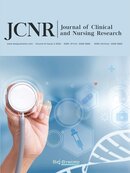Abstract
Danzhi Xiaoyao powder was first introduced by Xue Ji, a Ming Dynasty physician, in the “Summary of Internal Medicine.” It is primarily used for treating the syndrome of liver depression transforming into heat and is widely used in the treatment of dermatology, internal medicine, gynecology, and other multi-system diseases. This medical prescription is aptly dispensed, its detoxification effect is strong, and it is a representative medical prescription for soothing the liver, strengthening the spleen and stomach, as well as eliminating heat stagnation. Chief Physician Wang Defen inherited the academic experience of the fifth batch of nationally known Chinese medicine experts, under the guidance of Professor Ji Haiwang, a notable Chinese medicine practitioner in Shaanxi Province and Professor Shi Bingyin, a renowned endocrinologist. Through follow-up studies, the various methods and empirical prescriptions of Danzhi Xiaoyao powder applied by Chief Physician Wang Defen in the treatment of common clinical diseases are summarized. They have been proven to have conclusive efficacy, thus providing guidance and reference for the dialectical treatment using traditional Chinese medicine.
References
Liu Y, He W, 2009, Danzhi Xiaoyao Powder, China Medical Science and Technology Press, Beijing, 3.
Ni X, Jin G, 2014, Progress in Clinical Application of Danzhi Xiaoyao Powder. Modern Distance Education of Traditional Chinese Medicine, 12(13): 162–163.
Wen P, 2003, The Top Ten Famous Recipes of Traditional Chinese Medicine for Xiaoyao Powder. China Traditional Chinese Medicine Press of Beijing, 2003: 76.
Hu H, Ma S, Sun X, 2017, Observation on the Efficacy of Fumigation Combined with External and Internal Application of Traditional Chinese Medicine in the Treatment of Melasma. China Medical Beauty, 7(08): 85–88. https://doi.org/10.19593/j.issn.2095-0721.2017.08.032
Wen P, 2003, The Top Ten Famous Recipes of Traditional Chinese Medicine for Xiaoyao Powder. China Traditional Chinese Medicine Press of Beijing, 2003: 75.
Wu X, Wang Y, Liu W, 2011, Clinical Data Analysis of 130 Cases of Melasma in Women. Chinese Journal of Dermatology and Venereology, 25(11): 863–864 + 873.
Fu C, 2012, Treatment of Melasma from Qi and Blood Nourishment. Asia-Pacific Traditional Medicine, 8(03): 65.
